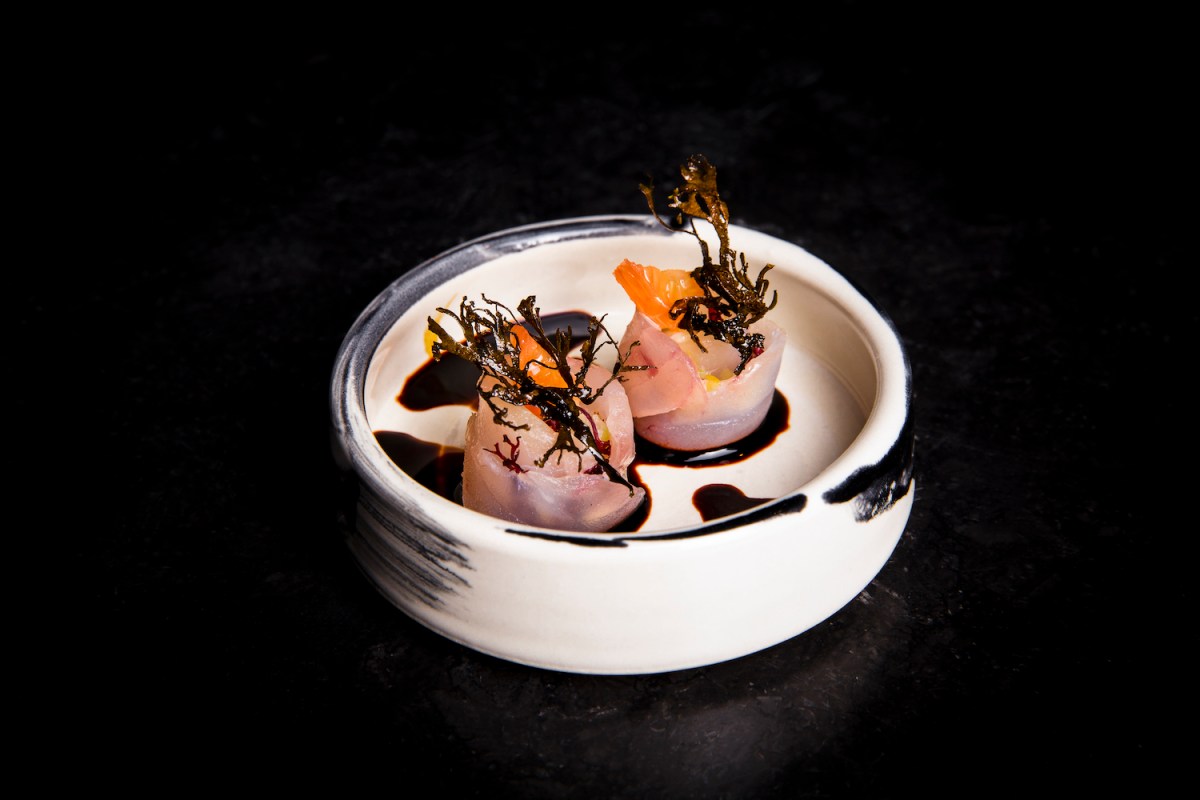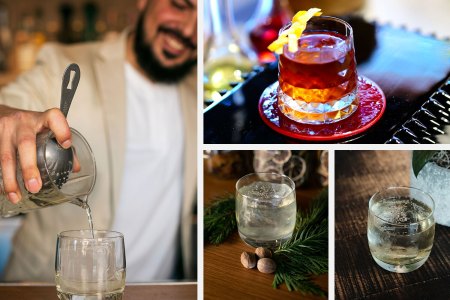Perhaps the most complimentary adjective one can use when describing fish and seafood is “fresh,” but these days, top chefs are looking for anything but.
This is no prank. The controlled rotting that renders dry-aged beef so sought after has come for seafood, forming the latest trend to take San Francisco’s tables by storm. This includes Michelin-starred Aphotic, a temple to seafood where chef Peter Hemsley takes full advantage of the five in-house dry agers to craft everything from dry-cured tuna sausage to week-old Bodega Bay rockfish.
When you think about it, dry-aging fish makes just as much sense as dry-aging beef. The process pulls water from the flesh and allows naturally occurring enzymes to break these proteins down for a richer, more concentrated flavor.
“In short, dry-aging condenses the flesh of the fish, releasing the desired flavor, without letting the fish rot, as it would in, say, a normal refrigerator, in the space of a couple of days,” says Hemsley.
This is particularly important for fish, known for its short shelf life. And in a world where it’s cool to cut down on food waste, dry-aging fish has never been more apt to take root. As a result, Hemsley says, it would be no surprise if the practice surges in popularity, not just on the coasts, but across the country.
“Led by chefs like me and Michael Cimarusti from Providence in LA, or the Dry Aged Fish guy, with his boutique butcher shop also in LA, the rest of the country will follow the movement until you start seeing Chicago or Midwest chefs doing the same,” says Hemsley. “That’s when you know that the movement is beyond a movement, and is now a norm.”
Want to Try Fat-Washing Your Cocktails at Home? Here’s How.
Bay Area bartenders are here to help, whether you’re using bacon fat or coconut creamAnd much like dry-aging beef, it’s also coming into home kitchens. Of course, many restaurateurs take advantage of high-tech dry-aging fridges, like the ones at Aphotic, which hover between 40 to 45 degrees Fahrenheit, with a relative humidity of 85 percent, so the fish dries slower than it would in the open air, preventing a hard surface from forming. But even without a dry-aging cabinet, a home cook can craft a similar environment in a home fridge…provided the people with whom one shares said fridge aren’t too squeamish.
Hemsley recommends starting with a whole, gutted fish rather than a filet. The fish should be patted completely dry and above all never rinsed in tap water, especially when working with saltwater fish, lest the flesh begin to break down. The fish is then ideally suspended by the mouth or tail with a hook (suspending it from your bottle rack, if you have one, will do the trick), or, in a pinch, you can lay it flat on a metal rack.
Fish stored this way benefit from a minimum of three to five days of aging before use, though each fish has its own optimal dry-aging time. At Aphotic, rockfish stays in the dry-agers for a week, salmon up to two. Bluefin tuna can go for a month or even more — and while many fish lend themselves well to this process, according to Hemsley, it’s tuna that works particularly well, “due to its active aerobic life.”
“At Aphotic, we think of tuna as an ocean cow, or conversely, of cows as land tunas,” he says, noting that one of his favorite ways to introduce the technique to diners is with a bone-in “cowboy” steak from a month-old bluefin tuna loins.
“This allows me to showcase a dense flesh in the tuna, a bit of the funk that you get from the dry-aging, but in a very subtle way,” he says.
“To be clear, some people will simply not enjoy dry-aged fish, due to the increase in flavor that they are not accustomed to. Just as a dry-aged ribeye will have an intense nutty savoriness to it, with a denser chew, dry-aged fish will also have its unique notes and flavor profiles — developed for connoisseurs, but not for everyone.”
Perhaps the best part about this technique is how much you can play with it once you’ve mastered the essentials.
“It would be good for some chef to develop a book that explains the optimal dry-aging for each fish and ways to dry-age it,” Hemsley muses. “I guess I have my work cut out for me.”
Every Thursday, our resident experts see to it that you’re up to date on the latest from the world of drinks. Trend reports, bottle reviews, cocktail recipes and more. Sign up for THE SPILL now.

























